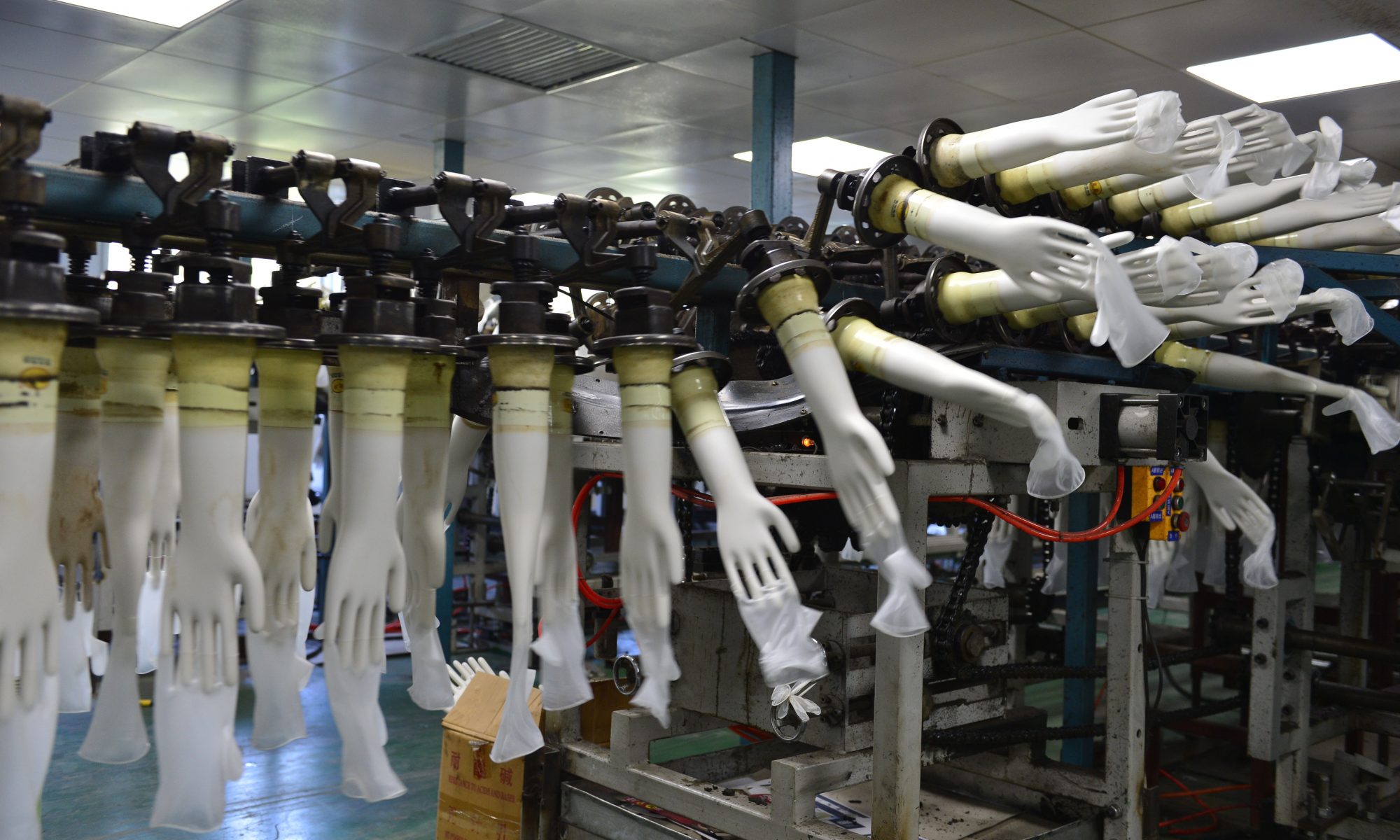Unlike latex gloves, nitrile and vinyl gloves are not made from natural rubber. These gloves come from synthetic materials, but the manufacturing process is essentially the same as latex glove production.
Neither nitrile nor vinyl gloves will aggravate sensitivities to latex, and are largely replacing latex gloves in most applications, especially food service and medical use.
Here is an overview of how manufacturers create these gloves:
Creating the synthetic materials
The processes for creating the nitrile and vinyl materials is similar. The nitrile butadiene rubber (NBR) used for nitrile gloves is a copolymer, which is a substance derived from the bonding of molecules. In the case of NBR, the two parts are butadiene and acrylonitrile, which chemists combine using a process known as copolymerization.
These molecules provide specific advantages for the gloves: Acrylonitrile enhances the chemical resistance, while butadiene creates flexibility and tear resistance. Nitrile has three times the puncture resistance of latex as well as greater chemical resistance.
Vinyl gloves come from polyvinyl chloride (PVC) monomers alone. Because chemists use only one type of monomer to create PVC, the material is known as a polymer. Once they have polymerized the substance, the chemists add a plasticizer to the PVC. This makes the material flexible; otherwise, the PVC would be rigid, as it is when used to form pipe.
PVC is inexpensive to create, making it a cost-effective alternative to latex. It is a popular choice for applications involving frequent glove changes, especially food service, jan/san, and salon & beauty.
Producing the gloves
Once the synthetic materials are prepared, they are added to the production process. With a few exceptions, this process is mostly the same as the steps for manufacturing latex gloves:
- The manufacturing equipment first runs ceramic, hand-shaped formers through water and bleach to clean them and remove any residue. The formers then dry and are dipped in a mixture of calcium carbonate and calcium nitrate, which helps the synthetic materials coagulate around the formers. Then the formers dry again.
- Machinery dips the formers into tanks of NBR or PVC. The following step involves heating the materials at a high temperature to form the gloves as they dry.
- To help nitrile gloves go on more easily, they undergo one of two processes: chlorination or polymer coating. Chlorination involves exposing the gloves to chlorine—as an acid mixture or gas—to harden the material and make it more slick. Polymer coating lubricates the glove surface by adding a layer of polymer.
- Finally, in what is known as the stripping phase, blasts of air remove the gloves from the formers.
Checking for quality
The last steps of the manufacturing cycle include testing the gloves and shipping them.
The quality control process, based on standards from the American Society for Testing and Materials (ATSM) and regulated by the U.S. Food and Drug Administration (FDA), includes the pinhole leak test. While all gloves have some pinholes, this test tells manufacturers whether a glove has enough pinholes to lead to a noticeable leak.
After filling the gloves with 1 liter of water, the workers hang them upside down for two minutes to see if the gloves can hold the water. Exam-grade gloves must pass more stringent standards than industrial-grade gloves, which must meet basic quality tests but not the higher standards for exam gloves.
These tests adhere to acceptable quality limits (AQLs), which are percentages indicating how many gloves in a batch must fail the test to determine if the entire batch fails.
The final step is for workers to package the gloves. Then, the gloves ship from manufacturing facilities in Southeast Asia via ocean freight to their final destinations.





